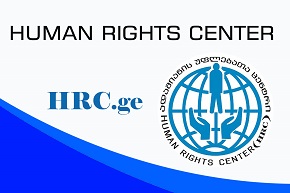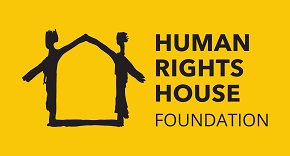 Six hundred trafficked girls have been found in Turkey over the last three years. They are mainly from the former Soviet Union. Girls from Moldavia, the Ukraine and Russia occupy the first three places in the list. Georgian girls take the sixth place. Their number reached 29 over the last three years.
Six hundred trafficked girls have been found in Turkey over the last three years. They are mainly from the former Soviet Union. Girls from Moldavia, the Ukraine and Russia occupy the first three places in the list. Georgian girls take the sixth place. Their number reached 29 over the last three years.
Ramazan Deisal, police inspector of the Illegal Migration and Human Trafficking within the Turkish Internal Ministry stated that in 2004 two hundred thirty-five victims were found in Turkey. 62 of them were from Moldova, 61 from Russia, 26 from the Ukraine, 23 from Azerbaijan, 19 from Kyrgyzstan, 16 from Georgia, 11 from Rumania, 9 from Kazakhstan, 5 from Uzbekistan and 3 from Belarus.
“We assisted 222 victims in 2005. Sixty-nine of them were Ukrainian, sixty were Moldavian, twenty-five Russian, one Kyrgyz, eleven Romanian, ten Uzbek, eight Kazakh, seven Georgian, six Belarusian, six-Turkmen, one Armenian, one from Uganda and one from Bulgaria.”
“The statistics in 2006 is the following: 29 victims were Ukrainian, 69 were Moldavian, 38-Russian, 24 Kyrgyz, 18 Azeri, 14 Uzbek, one Kazakh, six Georgian, one Belarusian, 4 Turkmen, one Armenian, 2 Iranian, and 2 Bulgarian.”
The respondent pointed out that people usually come from the former Soviet countries (Georgia, Moldavia, Rumania, Armenia, Azerbaijan, Ukraine, and Russia) to Turkey to work. Having arrived in Turkey they hope to find a proper job and nothing more.
“The people, who stay and work in Turkey illegally, become trafficked victims mostly. The traffickers seize their passports, force them to work in sexual business and blackmail them. Unless they obey their demands, the traffickers threaten to take them to police department from where the victims will be deported back home. They also use some other methods of blackmailing and thus the traffickers force them to obey their demands. We have not declared Turkey as a transit country yet. However, we are sure that similar transporting routs really exist in Turkey. The route can be the sea, where ferries transport people, the boot of autos and on foot. However, the people who get into Turkey on foot or by being concealed in auto boots cross the border legally and thus have their documents in order even when the victims are transported to other countries from here,” said Deisal
Last year, the Turkish office of the International Organization for Migration published very detailed and interesting information about trafficking in Turkey. According to the information, 469 victims were discovered in Turkey in 2005. Two hundred and twenty of them returned to their homelands with the assistance of the IOM. Sixty-six victims out of those 220 were from the Ukraine, 64 from Moldova, 29 from Kyrgyzstan, 11 from Uzbekistan, 11-from Rumania, 6-Belarus, 3 from Georgia, 2 from Turkmenistan, 2 from Azerbaijan, one from Uganda.
Representatives of the IOM estimated the total income for the traffickers from their illegal businesses amounted to 360 million USD. Sexual service for a single client cost from 50 up to 150 USD. The price depended on the physical appearance and abilities of the client.
Mark Hultsi: “According to the information, 55% of victims were between 18 and 24 years old and 24% of them were from 25 to 30. As for their education, 59% of the victims had received a secondary education. All of them were women. 76% of the victims said that the reason to seek employment in Turkey was that their living conditions back home were poor. Women went to Turkey with various promises that traffickers gave them. Traffickers worked themselves to win 86% of the victims over by promising them well-paid jobs, 7% of the victims were kidnapped and 9, 2% got in touch with traffickers after having read vacancy announcements in the newspapers. In 2005, according to data, 94% of the trafficking dealt with sexual trafficking.”
The victims are mostly from poor families. 3% out of 220 victims were aged from 14 to 17. 55% of them were aged from 18 to 24. Most of the victims were mothers. 73 % of them had a single child, 20% of the have 2 children, 5% has 3 children, 2% has more than three children. The IOM Turkish Office’s report also provided a list of cities where trafficking most often occurs. They are: Istanbul (33%), Antalia (56%), Ankara (16% of cases), Artvin (4%), Mersin (5%), Izmir (4%), Kushadas (3%), Igrid (3%), Trapzon (2%), and Bodrum (1%).
--------------------
Trafficking Azerbaijan
-------------------
Like Georgia, Azerbaijan is also used as a transit country for human trafficking. 231 purchased girls, 58 detained traffickers and 14 organized groups of traffickers were revealed in Azerbaijan during a year.
Alovsat Aliev, the director of the Emigrants Legal Aid Center in Azerbaijan, said that the potential victims are especially from Central Asia, Belarus, Russia and Moldavia.
Alovsat Aliev: In the Caucasus, Azerbaijan is considered to be a transit country. The traffickers use Nakhichevani to enter the country. The planes land there and then they leave for Turkey and Iran. Azerbaijan has become a transit country for Pakistan recently as well. The girls arrive in Azerbaijan legally with their passports and visas in order. Organized groups arrange everything. In the past girls were mostly transported to Dubai, however, lately they are taken to Pakistan, Turkey and Iran. Azerbaijani citizens and others such as Russians and Turkish criminals are involved in the crime. They cooperate with each other. For example, a Russian group collects girls in Russia and brings them to Azerbaijan. The second takes them to a third country where a destination group meets them. It is an organized crime, and the last group that uses the girls for prostitution pays the first two groups for the deliveries. Although, the government fights the problem, the number of trafficking crimes has only increased.
According to the respondent, Azerbaijan is both transit and destination country. Trafficked women arrive particularly from Asia, Georgia, Russia, the Ukraine and Belarus. “Initially, when the girls arrive in the country traffickers offer them six-months worth of work and promise 6 000 USD at the end. Nobody rejects the proposal. Finally traffickers do not need the girls any more, because they are afraid that they will appeal the police and buy plane tickets to send them home. Criminals carry on their work accurately and never lose anything. Quite a large number of trafficked victims were from Azerbaijan in Turkey two-three years ago. In 2005, the number Azeri victims reached 16. More exact statistics reveal that in 2005, there were 231 victims in Azerbaijan. They were from various countries-11 from Uzbekistan and one from Kyrgyzstan. During nine months in 2006 we revealed 51 cases of trafficking. They were from Azerbaijan, Uzbekistan, Russia, and the Ukraine. Destination countries included: The United Emirates, Iran, Pakistan, Turkey and the United States. 58 traffickers were detained during the year; eleven of them were men and 47 women. Fourteen organized groups were revealed at that time.”
The US Foreign Department’s information mentioned above states that there are a total of three tiers. As a rule, a country should not remain in the second tiers for a long time. However, Georgia and the Caucasus in general remain in the second basket. Moreover, several years ago Georgia was in the third tier, thus the country normally should have been suspended from various types of existing US foreign assistance. There appears to be some politics and some subjective expediency involved. The problem of human trafficking is claimed to have been partially resolved thus enabling Georgia to move up to the second tier. However, the problem still plagues the region and requires immediate attention and moving from rhetoric to action.
Eka Gulua



